Norcold Refrigerator Not Cooling (What To Do)
Norcold is an American brand that is well-known for making refrigerators. It has a pretty diverse product catalog, consisting of heavy-duty refrigerators.
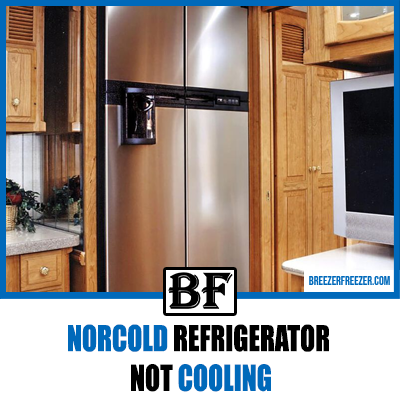
All of its refrigerators are known for their reliability and efficiency. However, it is just a machine, and like any other machine, it is likely to develop problems when used extensively.
On that note, cooling issues are one of the most commonly encountered problems when it comes to refrigerators. Even Norcold refrigerators face such issues from time to time.
Sometimes, you may notice that the whole refrigerator is unable to cool. In some other situations, the freezer may cool, but the rest of the fridge does not. So, if you are facing any such problems with your Norcold refrigerator, then this guide is for you.
Let’s get started, then!
Why Is Your Norcold Refrigerator Not Cooling Properly?
Norcold manufactures different types of refrigerators for all of your cooling needs. It offers AC/DC electric refrigerators or gas-powered refrigerators, so you can pick whichever suits your needs. You can also go with a full-sized refrigerator for your room or a portable RV refrigerator for when you want to go on a road trip.
However, the fundamental method for cooling remains the same, regardless of the type of refrigerator. Simply put, the cooling process follows a cyclical pattern, where the compressor pumps the refrigerant into the freezer. This cools the freezer, and the cold air is eventually circulated to the rest of the fridge.
There are several components inside the refrigerator that help in this process. As we’ve said, the compressor acts as the pump to circulate the refrigerant inside the fridge. Then, you have the condenser and the evaporator that are directly responsible for the cooling process. Finally, you have the thermostat and the thermistor, which work in conjunction to maintain the temperature inside the refrigerator.
Therefore, if any of these components were to malfunction, you would experience cooling issues. Furthermore, if the flow of air inside the fridge disrupts, the cooling of the entire fridge would be affected. Sometimes, a simple blown fuse may interrupt the power supply to the fridge, which can prevent it from cooling.
In any case, the different causes have been discussed below in detail so that you can diagnose and subsequently fix the problem effectively.
1. Faulty Compressor
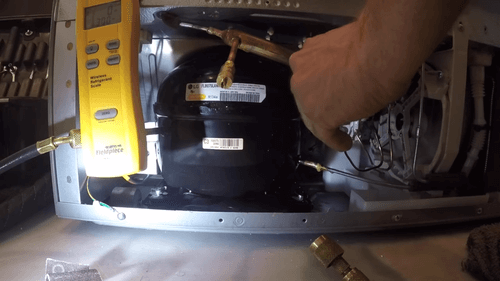
If you notice that the fridge light turns on but the refrigerator compartment is unable to cool, then it is possible that the compressor is malfunctioning. However, we recommend that you confirm it first, as it will help you proceed accordingly.
Finding the compressor on a Norcold refrigerator is easy enough. It is typically a small black compartment located in a cavity behind the fridge. Once you find it, test the start relay physically. If it makes a rattling sound on shaking, then the start relay is faulty.
But, if there’s no such sound, then it is possible that the whole compressor has gone bad. And, if you hear an odd or no sound coming from it, then you can say for certain that the compressor has malfunctioned.
2. Damaged Condenser Or Evaporator
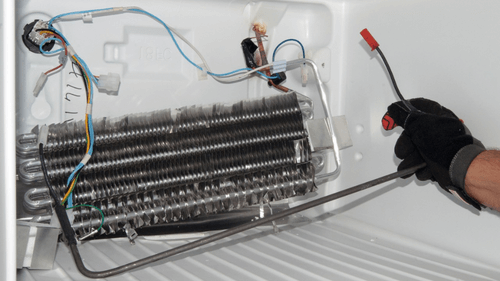
In a typical fridge, the condenser and evaporator form a network of metallic coils connected to the compressor compartment. The condenser coils carry the refrigerant to the evaporator coils, which eventually cool the refrigerator. So, if the condenser or the evaporator coils become clogged, the refrigerant flow gets disrupted, which gives rise to cooling issues.
Additionally, damage caused by corrosion or improper usage can disrupt the flow of refrigerant in these coils. You should also check if the condenser fan is running properly. This fan helps to cool the condenser coils to avoid thermal damage. So, if it stops working, the function of the condenser gets affected.
3. Thermistor Issues

More often than not, cooling problems in a refrigerator arise because of issues with the thermistor. It is a device that acts as a temperature sensor, as it detects the changes in ambient temperature. Based on that, it sends signals to the control board to regulate the temperature of the fridge accordingly.
When the ambient temperature is too hot, the thermistor facilitates the excess flow of refrigerant to the freezer. However, this results in frost build-up, which eventually clogs the coils, thereby preventing any further cooling.
Besides, a loose or damaged thermistor won’t be able to detect the temperature changes effectively, which will eventually lead to cooling problems.
4. Poor Air Flow

Proper airflow inside the refrigerator helps circulate the cold air from the freezer to the rest of the fridge compartment. This is usually facilitated with the help of fans, such as the evaporator fan and the condenser fan. So, if these fans stop working, the cold air will not be distributed throughout the fridge.
When that occurs, the refrigerator will not cool uniformly. You will notice that the freezer will remain cold while the rest of the fridge compartment remains relatively warm.
5. Inadequate Coolant
The coolant or the refrigerant is usually composed of a mixture of ammonia, hydrogen, and water. When you purchase a fridge, the coolant is present in sufficient quantity, which subsequently assists the cooling process. But, as the fridge gets older, some of this coolant dissipates or dries up due to usage, which ultimately reduces the cooling efficiency of the refrigerator.
In that context, the effects of low coolant are generally noticeable in the fridge compartment rather than in the freezer. This is because the freezer is smaller in size, and coolant is first circulated through it. The fridge compartment is larger in comparison and requires more coolant to achieve the same effect. That will obviously not be possible if the coolant in your refrigerator is running out.
6. Incorrect Usage
For portable models like the Norcold RV refrigerator line, cooling issues can often be attributed to bad usage habits. The small size of these refrigerators allows them to be installed in RVs.
However, if you drive the RV recklessly over uneven terrain, the internal cooling components of the fridge might get damaged by the vibrations and jerking. Besides, if you keep the fridge fully packed at all times, it will obstruct the ventilation and reduce the cooling capacity.
What To Do When Your Norcold Refrigerator Is Not Cooling?
A refrigerator is a widely used household appliance that keeps your food fresh and safe for a long time. And, if you live in a hot and humid climate, having a refrigerator is a must. So, if it fails to provide sufficient cooling, it can be problematic.
Even if that happens, there is no need to panic. We suggest you take a look at the cooling unit to diagnose the problem based on the discussion above. After you diagnose why your Norcold refrigerator is not cooling, you can address it accordingly.
In this regard, some of the solutions may be fairly simple such as replacing a fuse or circuit breaker or cleaning dirty components. These can be done without any hassle and require little to no time. But, with the other fixes, you might need to invest some time and money to get them done.
Nevertheless, following these solutions may help fix any cooling issues that persist in your Norcold refrigerator. So, let’s see what they are.
1. Replace The Compressor

If the compressor is faulty, then you’ll have no other option than to get it replaced. Usually, replacing the compressor is a time-consuming process. Not only that, but replacing the compressor can also cost you quite a bit.
Fortunately, most Norcold models come with a compressor that is relatively easy to replace. First, switch off the power and disconnect the power supply of the fridge. Then, carefully move it away from the wall so that you can unscrew the back panel. Subsequently, remove any metal guards to get access to the compressor.
After that, you’ll need to disconnect the compressor from the capacitor. Disconnect the suction lines as well and carefully remove the compressor. Then, put in the new compressor and reconnect all the suction lines and the capacitor.
We would suggest that you avoid rushing through this part because any mistakes will make the whole fridge inoperable. Besides, incorrectly replacing the compressor may further disrupt the cooling cycle, which will complicate the problem even further. But, if you install it carefully, the cooling system will start working normally again.
2. Clean The Condenser And Evaporator Coils
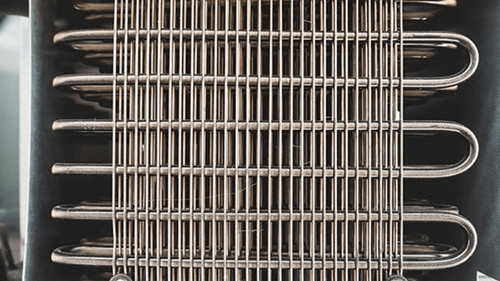
This is a simple fix that involves cleaning the evaporator and condenser coils on the back of the fridge. You can use a vacuum brush to clean the loose dirt. To clean the tough grime, you can use a clean rag soaked in a bit of soapy water.
Before you do this, make sure to disconnect the power source to avoid any unnecessary accidents. After you clean it properly, the functionality of the coils will be restored, which will allow the refrigerator to cool efficiently once again.
3. Replace The Coils

If the above solution fails to provide the desired results, then it’s possible that the coils have become too damaged, either due to corrosion or improper usage. In such a case, you will have to replace them with new ones. It is advisable to seek professional help for this task since they are much more complicated to remove and replace, unlike the compressor.
You can contact Norcold customer support regarding your issue, after which a qualified technician will be sent to your home to get the replacement done. Or, if you own a portable RV fridge, you can simply take it to your nearest authorized Norcold service center.
4. Adjust Or Replace The Thermistor

It is possible for a thermistor to become loose, which prevents it from working properly, as we have said before. In that case, you can simply readjust the refrigerator thermistor, which will restore its normal functions. Make sure to firmly attach it in place so that it stays connected to the control panel of the fridge.
However, if you still notice issues, then you should try removing the thermistor altogether. If your fridge cools after removing it, then it is safe to assume that your thermistor is damaged.
You can try to run the fridge without the thermistor, but we would recommend getting a replacement as soon as possible. A thermistor is necessary for the fridge to run properly and maintain a consistent temperature. So, if you keep using the refrigerator without one, it might cause irreversible damage.
5. Ensure Proper Air Circulation
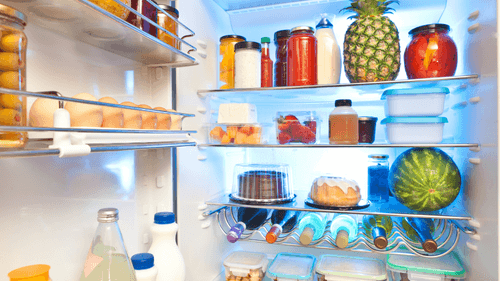
If you want your fridge to work properly, then it is crucial to ensure the air circulation is adequate. As we have discussed before, airflow problems can lead to non-uniform cooling inside your fridge. And, you will need to ensure that the cooling fans are functional to avoid that issue.
The best way to achieve that is to keep the fans clean. Therefore, if you notice that a fan has become dirty, you need to clean it with a brush or a clean rag.
You can install additional external fans to keep the refrigerator ventilated. In case of portable RV refrigerators, you should keep them in such a manner as not to obstruct the exhausts and fans.
Besides, you need to ensure that the condenser fins are clean. Dirty fins can obstruct the ventilation of the condenser, which eventually gives rise to cooling issues. So, clean the fins and the condenser fan with a vacuum brush to maintain the airflow.
6. Refill The Coolant
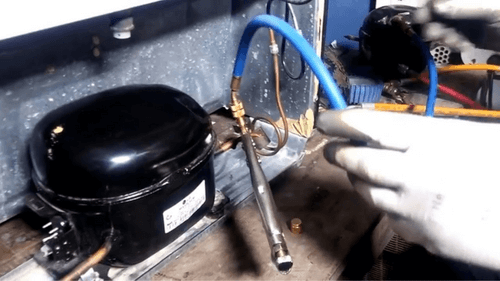
As we have discussed before, when the coolant dries up, the cooling efficiency of the refrigerator declines. Thankfully, refilling the coolant is simple enough and is relatively inexpensive.
However, since it involves handling chemicals, we recommend that you get it done by a qualified technician. And, you should make sure that the fridge is defrosted before refilling, or else foul smells may develop inside the refrigerator chamber.
7. Position The Refrigerator Properly

In case you own an RV fridge, you need to position it properly so that the cool air can flow from the freezer to the refrigerator section. For that, you need to place the fridge in an upright position.
If the ground below it is uneven, you can place leveling blocks to make sure it is erected correctly. Moreover, you should use the refrigerator more carefully to avoid any damage to the cooling unit.
You should try to drive more carefully over uneven terrain so that the vibrations can be minimized. Also, if your fridge is overcrowded, try to take some of the stuff out. That will provide clear ventilation and improve the cooling capacity.
Frequently Asked Questions
Does a Norcold refrigerator face cooling issues due to hot weather?
When the ambient temperature is hotter than usual, it is quite normal for the refrigerator to encounter cooling issues. This is because the compressor needs to work harder to cool the fridge to counter the external heat. However, if you provide proper air circulation and seal the door properly after opening, then these cooling issues can be minimized.
How does defrosting help with cooling issues?
Most refrigerators, including those made by Norcold, encounter frost buildup over time, so it is a natural phenomenon. But, too much frost can clog the coils in the freezer. On top of that, it hampers the heat transfer process inside the compartment, which reduces the cooling efficiency of the fridge.
Defrosting the fridge periodically clears out this excess frost buildup to ensure that the coils are not clogged and the heat transfer process runs smoothly. That’s why it is good for maintaining the optimal cooling capacity.
Does a faulty power source cause cooling issues?
If the power source is faulty, then your refrigerator will not even turn on, which obviously implies that it won’t be able to cool.
You can try and reset your Norcold refrigerator.
In that case, it is recommended that you check the fuses and plugs if your fridge runs on AC power. If it runs on DC power, make sure to check and replace the battery if it is faulty. Subsequently, for a gas-powered fridge, ensure that there is enough gas in the tank and that the supply pipe is operating smoothly.
Final Words
We have discussed some of the most common cooling issues related to Norcold refrigerators and the solutions that can help you fix them.
So, the next time you notice your Norcold refrigerator not cooling properly you can refer to this guide for assistance. We hope that with the information provided here, you can get your fridge running smoothly again in no time. However, if you are not sure about doing it yourself, we suggest you consult a professional mechanic to avoid further damage.
And, that’s all we have to say for today. We will be back again with more helpful guides in the future.
Until next time, goodbye!
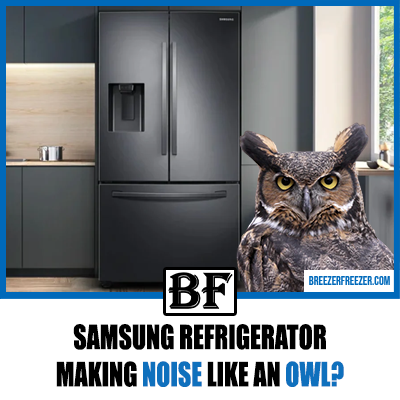
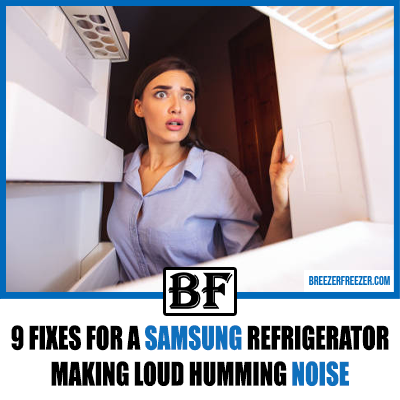
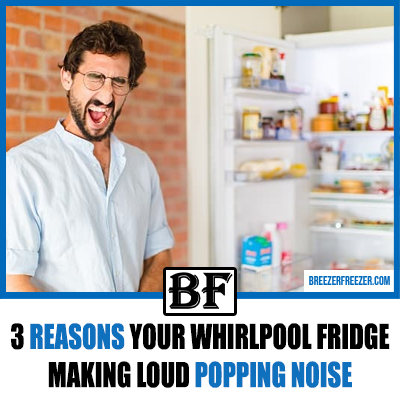
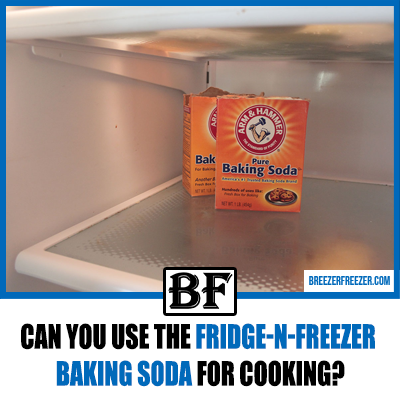

![Are GE Refrigerators Good Quality Brand? [Quick Answer!]](https://breezerfreezer.com/wp-content/uploads/2023/10/Are-GE-Refrigerators-Good-Quality-Brand.png)